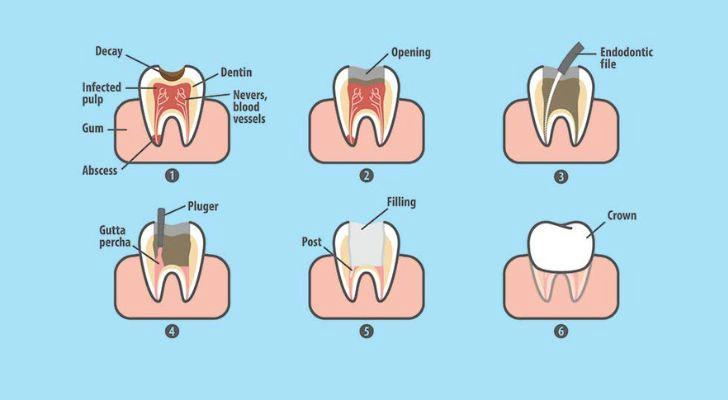Understanding Root Canal Treatment: When and Why You Need It
When it comes to dental health, understanding root canal treatment is crucial. This common procedure often raises questions and concerns, but knowing when and why you might need it can help ease any anxiety.
A root canal is a treatment used to save a tooth that is badly decayed or infected. Instead of removing the tooth, a dentist removes the damaged tissue inside the tooth, cleans it, and seals it to prevent further damage. Let’s explore this procedure in more detail.
What is Root Canal Treatment?
A root canal is a dental procedure designed to remove the infected or damaged pulp from inside a tooth. The pulp is the soft tissue inside the tooth that contains nerves and blood vessels.
When this pulp becomes infected or inflamed—usually due to deep decay, repeated dental procedures, or a crack in the tooth—it can cause severe pain and lead to an abscess if not treated. The procedure involves cleaning out the infected tissue, disinfecting the area, and then filling and sealing the tooth.

This process not only saves the tooth but also alleviates the pain caused by the infection.
Signs You Might Need a Root Canal
So, how do you know if you might need a root canal? Here are some common signs:
• Persistent tooth pain that might be sharp or dull, often worsening with hot or cold foods.
• Swelling or tenderness in the gums near the affected tooth.
• A darkening of the tooth.
• The appearance of a small, pimple-like bump on the gums.

These symptoms suggest that the pulp inside your tooth is damaged or infected, and a root canal might be necessary to save the tooth.
Causes of Pulp Damage and Infection
What leads to pulp damage or infection in the first place? The most common causes include:
• Untreated cavities: When a cavity is left untreated, it can grow and eventually reach the pulp, causing infection.
• Cracked or chipped teeth: These can allow bacteria to enter the pulp.

• Repeated dental procedures: Procedures on the same tooth can weaken the pulp over time.
• Trauma to the tooth: Even without visible cracks, trauma can lead to pulp damage.
The Root Canal Procedure: Step-by-Step
Understanding the root canal procedure can help ease any concerns. Here’s what to expect:
1.Examination and X-rays: The dentist will assess the extent of the damage.
2.Numbing the area: The dentist will numb the area around the tooth to ensure a painless procedure.
3.Drilling and accessing the pulp chamber: The infected or damaged pulp is carefully removed.
4.Cleaning and sealing: The inside of the tooth is cleaned, shaped, and sealed with a rubber-like material called gutta-percha.
5.Restoration: A temporary filling is placed until a permanent crown can be fitted.
A Real-Life Example
Let’s consider the case of Emily, a 32-year-old mother of two. Emily had been experiencing intermittent tooth pain for months but dismissed it as sensitivity.
One day, she woke up with severe pain and swelling around her lower molar. After visiting her dentist, she learned that she had a deep cavity that had reached the pulp of her tooth. Her dentist recommended a root canal to save the tooth and prevent the infection from spreading.
Despite her initial fear of the procedure, Emily found that the root canal was virtually painless. The pain she had been living with for months was finally gone, and with the tooth now fully restored, she could enjoy her favorite foods again without discomfort.
Why Root Canals Are Important
Root canals play a critical role in maintaining oral health. By removing the infected pulp and saving the tooth, the procedure helps prevent:
• The spread of infection to other teeth or parts of the body.
• The need for tooth extraction, which can lead to other complications like shifting teeth and jawbone loss.
Many people worry that root canals are painful, but the procedure is designed to relieve the pain caused by the infection. With modern dental techniques and anesthesia, root canals are no more uncomfortable than getting a standard filling.
Alternatives to Root Canal Treatment
While root canals are effective, there are alternatives:
• Tooth extraction: Removes the entire tooth but often leads to issues like difficulty chewing and changes in bite.
• Waiting: Some might consider waiting to see if the tooth heals on its own, but this is rarely advisable as the infection can spread.

Conclusion
Root canal treatment is an essential procedure for saving damaged or infected teeth. Understanding when and why you might need one can help you make informed decisions about your dental health.
If you experience symptoms like persistent pain or swelling, it’s important to consult your dentist promptly. By addressing the issue early with a root canal, you can save your tooth and avoid more serious complications down the line.
